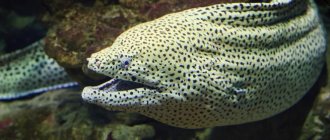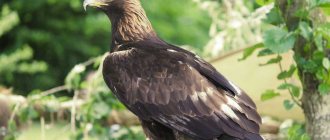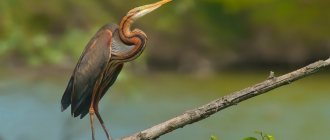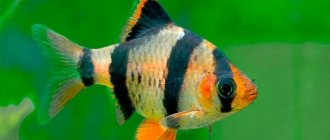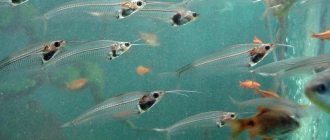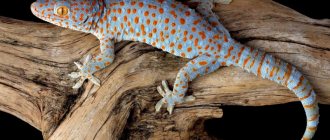Walrus and seal
Many people confuse walruses and seals. It is worth clarifying the difference between these animals. So, firstly, there are many types of seals, but there is only one walrus. It is larger than a seal in size and weight - at least twice as large. The walrus has large fangs - in other words, tusks, with the help of which these animals get food, fight and simply survive. The seal does not have these.
Walruses do not have ears (this is how the rhyme came about), but eared seals (you can guess this from their name) have auricles. The whiskers of walruses are thick and wide, while those of seals are thin and narrow. The former have almost no hair, the latter have it.
Walruses are peaceful towards each other and always stay in groups. There are skirmishes between seals (for example, over territory during the mating season); they often prefer isolation. At the same time, seals are more “talkative”; you can always hear some sounds from them. Walruses are silent people.
Social structure and reproduction
Photo: Baby eared seal
As mentioned earlier, eared seals are herd polygamous animals. They usually live in large herds, making rookeries on the shore during the mating and molting season. During the breeding season, males come ashore earlier than females, divide the territory and protect it. Then the females come ashore. On the territory, males create harems of sorts, in which there can be from 3 to 40 females. Eared seals reach sexual maturity at the age of 3 to 7 years, depending on the genus to which the individual belongs.
The birth of seal pups occurs on the shore. Immediately after the birth of the babies, mating occurs. Seals have a very long gestation period, lasting almost a whole year. During childbirth, the female gives birth to one sometimes two cubs. Little seals are born covered from head to toe in pure white, sometimes with a slight yellowish and fluffy fur.
The mother feeds the cubs with milk. Lactation lasts up to three months, after which the mother teaches the babies to fish. At birth, baby seals have one set of baby teeth, but over time the baby teeth fall out and are replaced by sharper molars. Which you can eat fish and crabs. Only the female is involved in raising the offspring. The father and other members of the pack do not take part in raising the babies. However, while the female is nursing her cubs, males guard the territory and do not allow other males into their territory.
Earless and eared: what is the difference
As mentioned above, previously seals were called pinnipeds, but not now: according to some researchers, true and eared seals have different origins. This is their main difference.
The former are the closest relatives of mustelids. That is why they have such an elongated body, like a spindle, which is comfortable to control in water, and short (in relation to the body) limbs. These seals were in the water for the first time in the North Atlantic Ocean. But their eared brothers (like walruses) originated from... bears! A small head, brownish fur color, tiny ears - all this indicates that it belongs to the bear family. They came off land in the Pacific Ocean.
Among other things, these types of seals differ in their flippers. Long-eared ones are able to step on their hind limbs and walk on the ground with them, but real ones are deprived of this ability: when they move on land, the flippers simply drag behind them. But these animals actively use their hind flippers in the water, swimming with their help. For their eared counterparts, the forelimbs are the means of swimming, and they use the hind limbs as a kind of “rudder”. Another difference between these seals and each other is that real ones do not have ears (for this feature they are sometimes called earless).
Real seals: species with photos, names, descriptions
Seals are a multispecies family of semi-aquatic predatory mammals. The size of these animals can vary from 90 cm to 4.8 m for the southern elephant seal, the largest member of the pinniped family. All types of seals are characterized by a streamlined body shape and four limbs in the form of flippers. Compared to dolphins, these sea animals are more mobile and flexible.
Most seal species live in the cold waters of the Southern and Northern Hemispheres. These animals mate and breed on the shore, and also flee to land when attacked in the water by killer whales and sharks. Below are the types of seals (with photos and descriptions) that exist on the planet.
White-bellied or Mediterranean monk seal
The body length of this animal from the family of true seals reaches 79 cm at birth and is 2.4 m in adults. White-bellied seals are ready to reproduce their own offspring from the fourth year of their life. On average they live 20-25 years.
Previously, these animals were widespread. Their populations were found on all Mediterranean islands, in the Black Sea, in the vast Atlantic Ocean and its islands.
The number of Mediterranean monk seals has now declined significantly. They can still be found in the area of Cabo Blanco beach in the northeastern part of the Atlantic, in the Aegean Sea and near the Madeira archipelago. According to researchers, the total population of the white-bellied seal is less than 700 individuals.
Hawaiian monk seal
This species of seal is found primarily in the northwestern Hawaiian Islands, including Laysan, Midway and Lisyansky Island, Kure and Pearl and Hermes Atolls. Unlike most of their relatives, these animals live in warm subtropical waters.
On land, these seals are in the breeding season. They can also often be seen lying on the sandy coast, resting on volcanic rocks or coral reefs.
The Hawaiian monk seal's diet consists of fish, crustaceans, eels, cephalopods and other benthic organisms. This species of seal almost became extinct due to large-scale hunting in the 19th century and is still considered critically endangered.
On a note! On the pages of “World of Adventures” you can also get acquainted with other unique representatives of the Hawaiian fauna.
Northern elephant seal
This animal also belongs to the family of true seals, being one of two species of elephant seals existing on the planet. These representatives of real seals got their name because of their large size and the presence of a large trunk in the males, who use it to emit a loud roar during the mating season.
Females can reach a length of up to 3.3 m, and males - up to 4.2 m. A successful male can fertilize up to 50 females in one mating season.
Northern elephant seals are found in the eastern Pacific Ocean. Their most popular breeding areas include the Farallon and Channel Islands, the area around the Piedras Blancas Lighthouse and Año Nuevo State Park in the United States, and the Mexican islands of Cedros and San Benito.
Southern elephant seal
This species of seal represents the second species of elephant seal existing in the world. The southern elephant seal is the largest aquatic mammal, second in size only to large cetaceans.
It is also the largest seal and the largest representative of the pinnipeds. It has a shorter trunk, but a larger body mass compared to the northern elephant seal.
Males of the southern elephant seal reach a length of 4.2-5.8 m, and females - 2.5-3 m. Extensive colonies of these marine animals are found in the Atlantic, Indian and Pacific oceans.
Unlike other types of seals, southern elephant seals can stay on land for a long time, without entering the water for several weeks. The basis of their food consists of krill, mollusks, cephalopods, fish of the notothenia family and crustaceans.
Ross seal
These animals live on hummocks near Antarctica. Ross seals are characterized by long front and rear fins, very short fur and a rather small head with a wide and short muzzle. After the annual molt, these animals acquire a silver color on the abdomen and a dark grayish-black on the back with brown or brick-red streaks appearing from the lower jaw to the chest.
Throughout the year, the fur of Ross seals can change to a completely brown color. Unlike most of their relatives, these animals prefer a solitary lifestyle and do not form large colonies. Their mating season occurs at the end of December, after which a year later the female gives birth to one cub.
Crabeater seal
This is the most common species of seal in the world. Its total population reaches about 75 million individuals. Such a huge number of crabeater seals in the world is due to the fact that, thanks to the sieve-like structure of their teeth, they can feed on Antarctic krill, which is found in abundance in the Southern Ocean.
The average body length of this type of seal reaches 2.3 m, and its weight is 200 kg. The body length of females is 6 cm longer than that of males. Crabeater seals are distinguished by their slender body and more elongated muzzles compared to their other relatives. They live in the vicinity of Antarctica, although they can sometimes swim to the outlying southern shores of New Zealand, Africa, South America and Australia.
Leopard seal
This species, compared to most other real seals, looks like a larger and more muscular animal. Its throat is whitish with black spots, which is what gave the leopard seal its specific name. The body length of these animals reaches 2.4-3.5 m, and their weight is 200-590 kg.
The leopard seal's jaw structure is similar to that of the crabeater seal, so these animals can also feed on krill. Leopard seals are found in the cold waters near Antarctica and are second only to killer whales among the main predators of the “ice continent.”
On a note! We also have an interesting article on our website dedicated to the unique fauna of Antarctica, which includes many other animals besides the leopard seal.
Weddell seal
This species of seal is distinguished by a spindle-shaped body of a dark silver-gray color, lighter in the lower part, and the presence of white, black and gray spots. During the summer molting period, their color turns completely brown. Weddell seals live on hummocks near the coast of Antarctica.
These animals are excellent swimmers, capable of diving to depths of more than 600 m and remaining under water for 82 minutes. Weddell seals also have excellent underwater vision and have a nictitating membrane that protects their eyes from snow and salt water.
Sea hare (sealed bearded seal)
This type of seal lives in the waters and on the coast of the Arctic Ocean. Sea hares are distinguished by massive jaws and numerous whiskers, which, when dry, can take on funny twisted shapes. Due to this, such seals seem especially funny.
Sea hares are one of the main sources of food for polar bears and Inuit living on the Arctic coast. This type of seal feeds on small inhabitants of the ocean floor (in particular, fish, shellfish and squid). The whiskers of these animals play the role of a kind of tentacles, allowing them to find hidden prey.
Khokhlach
The specific name of these seals is associated with the presence of an inflatable hood on the forehead of adult males. Crested seals live in deep waters in the far north of the Atlantic Ocean.
The body of these seals is covered with silver or bluish-gray fur with characteristic black spots. The flippers have large claws that help catch prey in the water, but interfere with rapid movement on land.
Crested seals are distinguished by a solitary lifestyle. They gather in flocks exclusively during the breeding season and during the molting period. The cubs of these seals grow up very quickly - already on the fourth day of their life they stop feeding on their mother's milk.
Crested seals have the shortest lactation period of any mammal on earth. After their mother leaves them, young hooded seals survive among the ice using their fat reserves.
harbor seal
This species of seal is found in arctic and temperate maritime climates on the coasts of the Northern Hemisphere. It is also considered one of the most common seals in the coastal waters of the Pacific and Atlantic oceans, the Baltic and North seas. Harbor seals have brown, gray or silvery-white body colors and characteristic V-shaped nostrils.
The body length of adult individuals can reach 1.85 m. These animals are found mainly in rocky areas. Coastal cliffs provide them with reliable shelter from predators and harsh weather conditions.
Harbor seal pups can swim and dive within a few hours of birth. Their rapid development is facilitated by very fatty milk received from the mother.
Motley or Far Eastern seal (larga)
This type of seal is characterized by a pale belly color and a dark silver body color. The fur is distinguished by a pattern of dark spots that are evenly distributed throughout the body. The motley seal's head is round with a narrow muzzle, and its flippers are narrow and short.
Larga is found in the North Pacific Ocean and the far northern edge of the Arctic Ocean. These seals can mainly be observed on the southern edges of the pack ice from winter to early summer, when they move to coastal areas. Although hunting for the Far Eastern seal is permitted, this does not greatly affect the size of its population.
Ringed seal (Akiba)
This species of seal lives in both the Arctic and subarctic regions, as well as in the Hudson Bay, Bering and Baltic seas. The ringed seal is the smallest Arctic seal.
It is characterized by a small head, loose body and short cat-like muzzle. The ringed seal's fur is dark with silver rings on the sides and back, and the belly has a silvery tint.
The average body length of this type of seal is 1.5 m. Ringed seals spend a significant amount of time lying on ice floes, and when they melt, they migrate further north in search of denser ice.
The diet of these animals is based on mysids, herring, cod and shrimp. The main enemies of the ringed seal are Greenland polar sharks, polar bears and arctic foxes.
Baikal seal
This species of seal is the only representative of the pinniped family found in freshwater. The flexible body in the shape of a torpedo gives the Baikal seal the glory of an elegant swimmer. Powerful rear flippers provide this animal with high speed of movement in the water.
Adult Baikal seals have dense fur that is dark silver-gray on the upper part of the body and yellowish-gray on the bottom. A thick layer of fat provides these animals with good buoyancy and protection from the cold. Baikal seals are found exclusively on Lake Baikal, the oldest and deepest lake in the world.
Caspian seal
This species of seal is endemic to the Caspian Sea. The color of the upper body of the Caspian seal varies from grayish-yellow to dark gray, while the sides and abdomen are a lighter gray shade, and there are dark irregular spots on the back. The pups of these seals are born with white and longer fur, which moults three weeks after their birth, and in return the body is covered with dark and short light hairs.
The Caspian seal feeds on sprat and crustaceans. Its main enemies are large eagles and wolves. The females of these seals carry their pups for 11 months. The Caspian seal is an endangered species and is especially vulnerable due to its narrow distribution range.
Harp seal (coot)
This species lives in the northernmost regions of the Atlantic Ocean and in some parts of the Arctic Ocean. The body color of the harp seal is silver-gray with noticeable triangular spots on the back.
The fur of the cubs of these animals is yellowish-white at birth and completely snow-white three days after their birth. They acquire adult color after 2-3 weeks.
The body length of adult harp seals reaches 1.5-1.6 m. Harp seals spend most of their lives in ocean waters and stay on land for a relatively short time. They often form large, noisy colonies.
Female harp seals are capable of reproducing offspring only by the 5-6th year of their life. They carry the cub for a year, usually giving birth at the end of February.
On a note! You can also read our article about the main animals of Greenland and find out from it what other types of seals exist on the “ice” island.
Long-snout or gray seal (tevyak)
This species of seal lives on the North Atlantic coast. Tevyaki are quite large animals. Body length can reach 2.5-3.2 m in males and 1.6-2 m in females.
Gray seals hunt fish (mainly bottom-dwelling species), obtaining them at a depth of 70 meters or more. Their diet also includes wrasse and cod fish, sand eels, lobsters and flounder.
Gray seal pups have silky snow-white fur and grow quickly due to their mother's rich milk. In the USA and Great Britain, these marine animals are protected by law.
Origin of Species: A Controversial Issue
The version of the different origins of seals has its opponents. Thus, some scientists argue that pinnipeds appeared approximately fifty million years ago, when neither the mustelidae family nor the bear family existed. Such researchers are inclined to assume that both true and eared seals nevertheless descended from a common ancestor, belong to the family of pinnipeds and are included in the suborder of dog-like arctoid predators, which, in addition to them, also included raccoons, canines, mustelids and bears.
Seals have "smoker's blood"
Seals, as well as heavy smokers, have high levels of carbon monoxide in their blood. Although humans get it from burning tobacco, researchers believe the levels of carbon monoxide in the seals' blood are linked to their deep dives. One study found that elephant seals' blood is 10% carbon monoxide, which researchers attribute to the animals holding their breath for about 75% of their lives. Exhalation is the only way to get rid of carbon dioxide in the animal's body.
Real seal: features
In addition to the already mentioned characteristics of the appearance of a real seal, it must be said about the short neck and the same tail, the first being inactive. Vibrissae are usually up to ten pieces, they are quite hard. It is the whiskers that help seals navigate in the water: they do not rely on vision, but with the help of their whiskers they catch obstacles and successfully overcome them. The front flippers of these animals are even shorter than the hind ones and are located closer to the head. The size and weight of a real seal ranges from one and a half to six and a half meters and from ninety to three and a half thousand kilograms.
Some species of seals do not have hair, but it is usually rough, not fluffy, and comes in a variety of colors. Seals are characterized by seasonal molting. Babies are born with thick, often white and very soft fur, which is replaced after three weeks. Pregnancy in females lasts from two hundred seventy to three hundred and fifty days, and reproduction (as well as molting) occurs on ice. The peculiarity of real seals is that mothers stop feeding their young with milk quite early, and for several weeks the babies feed only on accumulated fat reserves (since they themselves are not yet able to provide themselves with food). In general, real seals eat fish, crustaceans, and mollusks. Some species even hunt penguins.
Seal feeding
The main food for the seal family is fish. The animal has no definite preferences - whatever fish it comes across during the hunt, that’s what it will catch.
Of course, to maintain such a huge mass, the animal needs to hunt large fish, especially if they are found in large numbers. During periods when schools of fish do not come close to the shores in the size required by the seal, the animal can pursue prey, rising up the rivers.
Thus, the seal’s relative, the larga seal , at the beginning of summer feeds on fish that descend to the sea along river tributaries, then switches to capelin, which swims to the coasts to spawn. The next victims each year are herring and salmon.
That is, in the warm season the animal feeds on fish, which themselves tend to the shore for one reason or another; things are more complicated in the cold season.
The seal's relatives need to move away from the coast, staying close to drifting ice floes and feeding on pollock, mollusks and octopuses. Of course, if any other fish appears on the seal’s path during the hunt, it will not swim past.
Representatives of the real seal
Below are the types of seals, names and photos of individual ones. There are 13 genera of earless seals:
- Monk seals.
- Elephant seals.
- Crabeater seal.
- Sea leopard.
- Ross seal.
- Wedell seal.
- Crested seal.
- Sea hare.
- Common seal.
- Seal.
- Long-faced seal.
- Harp seal.
- Striped seal.
These thirteen genera include, according to various sources, from eighteen to twenty-four different species. The most ancient is considered to be the Puyila, which lived in the Canadian Arctic.
Features of behavior
Most often, seals form group aggregations - rookeries - on the shore or ice floe. Unlike other species of pinnipeds (fur seals, sea lions, walruses), true seals do not form dense and numerous herds. They also have a much weaker herd instinct: for example, seals feed and rest independently of each other and only monitor the behavior of their fellow animals in case of danger.
These animals do not quarrel with each other (except during the mating season); there have been cases when, during molting, seals scratched each other’s backs in a friendly manner, helping to get rid of old fur.
Seals on the shore are clumsy and helpless: they usually lie close to the water, from time to time diving into the wormwood for prey. In case of danger, they rush to dive, while moving with visible effort, but once in the water they swim quickly and easily.
Seals are able to dive to great depths and stay under water for a long time. The record holder for this is the Weddell seal, which can stay underwater for 16 minutes, while diving to a depth of up to 500 m!
Seals feed on a variety of aquatic animals - fish, mollusks, large crustaceans. Different species prefer to hunt different prey, for example, the leopard seal prefers to hunt penguins, the crabeater seal prefers to hunt crustaceans, etc.
Eared seal: features
Speaking about the appearance of eared seals, it should be noted, first of all, that females and males are easy to distinguish by size: males grow up to three and a half meters, females - only up to one. The weight of these species, compared to real seals, is quite small - from one hundred and fifty to one thousand kilograms. The color of the coat, as already mentioned, is brown, the hair itself is hard and coarse. The neck is long, the tail, on the contrary, is short. The hind limbs have claws, but the front ones do not. Moreover, they are quite large - a quarter of the entire body size of the animal.
Eared seals are quite active. They do not like ice, and prefer to molt and reproduce on the shore, but spend the winter in the sea. Pregnancy of females is approximately the same in duration as that of real seals, but they feed their babies with milk longer - about four months. After this, the cub is able to take care of its own food. Eared seals, by the way, almost do not eat crustaceans - their diet mainly consists of fish, shellfish, and krill. Some species are capable of eating the young of other seals, penguins, and birds.
Reproduction
During the breeding season, most species of true seals form pairs. Of these, only elephant seals and long-snout seals are polygamous. The female's pregnancy lasts from 280 to 350 days, after which one cub is born - already sighted and fully formed. The mother feeds it with rich milk from several weeks to one month, stopping feeding when the seal calf is still unable to obtain food on its own. Babies starve for some time, surviving on accumulated fat reserves.
Due to the thick white fur covering the skin and being almost invisible against the background of snow, the newborn seal pup received the nickname “squirrel”. Seals, however, are not always born white: seal pups, for example, are olive-brown in color. As a rule, females try to hide their babies in “holes” made of snow between ice hummocks, which contributes to their better survival.
Since seals on land are clumsy, the mother is completely unable to protect her child; in case of danger, she only tries to hide with the calf in the hole, and if it is still too small, she is saved alone. For this reason, mortality among whites is very high.
The main enemies of seals on earth are polar bears and... people. If bears hunt seals of all ages (they are quite capable of killing an adult), then people hunt exclusively for whites. After all, it is their children's fur that has the greatest density and quality.
Seal hunting is disgustingly simple - the cubs are simply beaten with sticks in front of their helpless mother. Moreover, “raw materials” are procured in quantities that are simply unjustified in modern times.
Southern species of seals, due to the desertity of the Antarctic lands, have no enemies on land. But danger awaits them in the water, where seals can be killed by killer whales. Some species of seals are on the verge of extinction due to the destruction of natural habitats. For example, the monk seal is deprived of its rookeries, since the coasts of the Mediterranean Sea are almost 100% occupied by human infrastructure.
During the breeding season, eared seals gather in fairly large herds on secluded coastal areas and islands. The first to appear on the shore are the males, who, trying to capture larger areas, arrange fights with each other. Then females appear at the rookery.
After some time, each of them gives birth to a cub, and soon after that they mate again with the male, who continues to guard his territory. The aggression of male eared seals fades with the end of the breeding season. Then these animals begin to spend more and more time in the water. In colder latitudes, they migrate to winter where it is a little warmer, and in more favorable conditions they can stay near their rookeries all year round.
Species of eared seal
The list of species of seals of this type includes fourteen to fifteen (data vary) items, which are included in seven genera of two subfamilies. They are as follows (we will list a few):
- Fur seals (northern, south American, subtropical, etc.).
- Sea lions (steller sea lion, New Zealand, Galapagos and others).
Previously, there was another type of seal - the Japanese sea lion, but now it is considered extinct, since since ancient times there has been a global hunt for seals and lions.
They prefer cold latitudes
Seals are mainly found in sea waters in Arctic regions, near the Arctic Ocean. They also inhabit temperate and subantarctic waters of the Pacific and Atlantic oceans.
Photo: Yuriy Rzhemovskiy
Seals prefer to live in water. Rookeries are established on secluded rocky coasts with small islands and reefs. The beaches where they live can be rocky, sandy or icy. Seals migrate far from their rookeries when they are not breeding or molting.
Habitat
True seals love cold and temperate waters. They are mainly found in subpolar latitudes, but the monk seal prefers hotter terrain - it is found in the tropics. In addition, among the real seals of all species in the world there are freshwater ones that live in Lake Ladoga, Lake Baikal and Finland.
As for the “eared animals,” they live exclusively in the Pacific Ocean - if we talk about the Northern Hemisphere. But in the South they can be found in the south of South America, as well as near Australia - in the Indian Ocean.
Enemies of the seal
For polar bears, the common seal is a desirable prey, but seals are very careful, so bears rarely get to eat seal meat. The main enemy of this marine mammal is the killer whale. Strong and fast killer whales easily catch seals. In the water, a seal cannot escape from a killer whale; it can only survive if it manages to jump ashore.
If you find an error, please select a piece of text and press Ctrl+Enter.
Types of seals in Russia
Of the real seals, the fauna of our country can boast of nine species (this does not include the endangered monk seal: there are only ten pairs of it in the Black Sea). Eared seals in Russia are represented by only two species: the northern fur seal and the sea lion (another name is the northern sea lion).
Of all the seals living in our country, only the Baikal seal, the spotted seal (largu), the bearded seal and the harp seal (all of them are real) can be caught.
Appearance of a common seal
The length of a common seal reaches an average of 1.85 meters, while its weight is about 160 kilograms.
Females are slightly smaller than males, but otherwise there are practically no gender differences.
A distinctive feature of seals is their V-shaped nostrils. By these nostrils the animal is easily recognizable regardless of its color. The color can be different, it may contain gray, brown and red colors. The dominant color, as a rule, is reddish-gray.
Baby seal.
Small spots of brown or black color are scattered throughout the body, the spots are similar to strokes, they have an oblong shape. The back is decorated with patterns of black and brown spots. Many individuals have black spots on the head, face and tail. The cubs have the same color as their parents, and not the white characteristic of other species.
The seals' head is egg-shaped, with a short muzzle, and the eyes are large and expressive, black in color. Their facial expressions make seals appear to be very intelligent animals. The forelimbs are short, the hind limbs, on the contrary, are well developed and quite strong. The tail is short. The jaws are powerful with large teeth and large fangs.
A couple of seals.
On land and in people, these animals move quite quickly, despite their heavy weight and external clumsiness.
Interesting Facts
Although eared and earless seals differ in many ways from each other, they also have similarities and features that are characteristic of these animals.
- Earless seals are slow on land, but feel great in the water - they can reach speeds of up to twenty-four kilometers per hour. Eared seals are active both on land and in water; their maximum speed is twenty-seven kilometers per hour.
- They are predators. The fish is not chewed, but swallowed whole. Maximum - they can tear into large pieces (they have very sharp teeth).
- They do not have lacrimal glands, but they can cry.
- The Baikal seal is a species of seal that lives in fresh water.
- To find out how old a dead seal is, count the circles at the base of the fangs.
- With the help of fat, seals maintain good buoyancy.
- The seal's pulse in normal conditions is from fifty to one hundred and twenty beats per minute, but when diving it is only four to fifteen beats.
- They have excellent hearing and very poor eyesight.
- Thanks to their white baby down, newborn seals are called pups. Belek is hunted by poachers due to its softness and density. Every year, a large number of baby seals die for this reason.
- They detect odors at a distance of up to several hundred meters.
- They breed once a year.
- To get rid of fur during molting, seals help each other by scratching their backs.
- Seals have very sensitive sleep.
- The name of the eared seals was given at the beginning of the nineteenth century by the British zoologist John Gray.
- The most numerous species of seal is the crabeater.
- Eared seals waddle along the ground.
- They can “accidentally” swallow stones along with food - up to eleven kilograms of stones were found in the stomachs of dead animals.
We are all touched when we see a seal - especially if we come to the dolphinarium. But, while rejoicing at meeting this cute animal, we must not forget that it is we, humans, who are the reason for the decrease in its population. This means that we can do everything to prevent this from happening.
Description and features
A large mammal with an elongated and streamlined body shape, adapted to an aquatic lifestyle. The weight of representatives of different species of animals varies significantly, ranging from 150 kg to 2.5 tons, body length varies from 1.5 m to 6.5 m. The seal is distinguished by its ability to accumulate fat in different seasons, then get rid of it, and significantly change size.
Common seal in water
The animal gives the impression of a clumsy creature when it is on land. Large body covered with short hair, thick neck, small head, flippers. In water they turn into excellent swimmers.
Unlike other pinnipeds, seals have maintained communication with the land, on which they spend a significant part of their lives. Flippers with developed hands and feet help to move in any environment. On land, they rest their body weight on their limbs and pull up their back part, which drags along the ground.
In the marine environment everything is different. In water, seals reach speeds of up to 25 km/h. Animals can dive into the depths of the sea up to 600 m. The flattened shape of the head seems to help them pass through the water column.
The animal's stay at depth does not exceed 10 minutes due to lack of oxygen. The seal must return to land to replenish the air sac under its skin for its next trip to sea.
Coarse wool retains heat. Thermoregulation is provided by a layer of subcutaneous fat that animals accumulate over the winter. Thus, seals endure the harsh conditions of the Arctic and Antarctic.
The brilliant eyes of mammals are very expressive. The seal in the photo looks piercingly, its intelligent gaze seems to hide something more that a person knows about it. The vision of smart fat people is not very sharp. Like all marine mammals, the eyes are myopic. Like humans, large animals can cry, although they do not have lacrimal glands.
But they pick up odors from 500 m away, they hear well, but the animals do not have ears. Tactile whiskers, similar to white mustaches, help them navigate among various obstacles. The ability to echolocation distinguishes only certain species. In this talent, seals are inferior to dolphins and whales.
It is almost impossible to distinguish a male from a female by external characteristics in most seals. The decoration on the males' faces distinguishes only elephant seals and hooded seals. Females may be inferior in weight, but without special measurements it is difficult to determine the difference.
The color of the animals is predominantly gray-brown with a speckled pattern. Oblong spots are scattered over the body. Cubs inherit the outfit from an early age. Natural enemies of seals are killer whales and sharks. Animals escape from them by jumping onto the shore. Polar bears love to feast on seal meat, but it is rare to catch the wary louts.
Habitat
It can be found off the coast of the Bering Sea, in the Beaufort and Chukchi Seas, and also far to the west. This is the White Sea, the Barents Sea - between the Kanin and Kolguev peninsulas.
There are a lot of sea hares in the western part of the Bohemian Bay. These animals are also permanent residents of the coastal waters of Franz Josef Land and the eastern part of the Pechora Sea in the area of the Yugorsky Shar Strait. Bearded seals love Novaya Zemlya. The Matochkin Shar Strait and the adjacent waters of the Kara and Barents Seas are simply teeming with these large animals. They do not shy away from Cape Zhelanii, and also constantly live in the coastal waters of the Admiralty Peninsula.
The hair is relatively sparse and coarse. The color is brownish-gray, darker on the back. Young seals are dark with a light muzzle. The bearded seal's vibrissae are long, thick and smooth, and not wavy like those of other seals.
Females are characterized by delayed implantation
The gestation period of most seal species lasts 9-10 months, with a three-month delay in implantation. The fertilized egg develops into a blastocyst and then remains dormant for two to four months before attaching to the wall of the uterus. This delayed implantation ensures that birth occurs at the right time each year.
About a month before the cubs emerge, a large number of females and males gather away from the rookery. The birth of the first cubs signals the males to come ashore. Females give birth to one young at a time; Twins are extremely rare. At birth, the cubs are about 90-105 cm long from nose to tail and weigh about 15 kg. Their fur sheds at the age of 2-3 weeks.
Photo: Ruvim Miksanskiy
Lactation lasts approximately three weeks, during which the mother spends most of her time in close proximity to her young. The young feed for about five minutes every five hours and quickly gain weight on high-fat milk. The cubs gain about 2.3 kg per day, but do not gain significant length.
As soon as the young are weaned, the female enters the estrus phase and attracts the attention of the male. At this stage, the mothers abandon the pups completely and they fast for one to four weeks before they begin to feed on their own at sea. Neither females nor males eat during the breeding season, and both experience significant loss of weight and body condition.
After the breeding season, the seals return to the sea and begin their migrations. Juveniles can travel up to 48 km per day. Adults are likely to return to their place of birth after reaching sexual maturity, at 3–5 years of age in females and 6 years in males.
Seals are polygamous
During the mating season, males display themselves, scream and fight, often trying to kill each other during copulation. Their large size and massive necks provide them with some protection from impacts and bites. During the initial stages of breeding, males control large areas with large numbers of females. Once mating begins, the males become distracted and smaller juveniles can settle on the periphery of the group. They mainly mate on land, although they can sometimes mate in water.
A study conducted in the Falkland Islands has proven that alpha male elephant seals are true philanderers. In one colony, more than 92% of pups born at one time were the offspring of a single alpha male, and up to 72% of other males in the colony never mated.
Common types
Today, more than 20 species belong to the family of true seals.
The most common are the following:
- Monk Seal. It is found in the Mediterranean Sea as it prefers warmer waters. The belly of the individual is almost always white, so it is often called the white-bellied. The weight of an adult mammal reaches 300 kg, body length varies between 3-4 meters. Several decades ago, the animal could be found off the coast of the Black Sea. Almost all the shores of the Mediterranean are polluted by humans, so individuals very rarely come onto land. This also prevents them from reproducing. The animal is listed in the Red Book.
- Crabeaters are the most numerous species of the family, distributed in the southern seas and Antarctica. The animal is so called because it prefers to eat crabs. Its muzzle is strongly narrowed in the area of the nose and mouth, which is associated with the characteristics of hunting prey. The weight of an adult crabeater does not exceed 300 kg, and the body length is 2.5 meters.
- The common seal is found off the coasts of Scandinavia, Russia and North America. The animal got its name due to its simple appearance, which has no special features. Animals are small in size. The maximum body length reaches 180 cm, and the weight does not exceed 180 kg. Humans actively hunt individuals of this species, which has put them at risk of extinction. The animal is often called the Russian seal, since only this species is often found off the coast of the Russian Federation.
- The harp seal is similar in weight and body length to the common seal. The difference between individuals of these species is color. Harp seals have silver-colored fur, the head is usually black, with a dark stripe running from it.
- The striped seal or lionfish is an unusual member of the family. The pattern of its fur is peculiar. White ring stripes alternate with black ones. However, predominantly males have this color; females have almost invisible stripes.
- The leopard seal is a real spotted animal. The main color of the coat is usually gray, with spots of different shapes and sizes located on it. The animal got its name because of its unusual color and aggressive character.
- The elephant seal is common off the coast of Antarctica and North America. It is large in size, body length reaches 6.5 meters, weight - more than 2.5 tons. Males have a trunk-shaped nose.
The list of species also includes other members of the family, but these are considered the most common.


